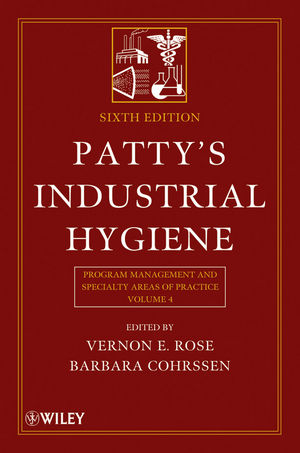
My wife, Stephanie, is a teacher. Although she has stayed home with our children for the last several years, she has still been involved in education. Over the last couple of years, she has mentored a young girl. Education for this girl, now nine, isn’t easy. She has moderate to severe ADHD and SDI (Sensory Integration Disorder). Due to a stable home life, quality teachers and this added mentoring however, this girl has done well in school.
About two years ago, Stephanie began to notice a gap in the ability of this girl and her peers. This gap wasn’t being reflected in grades, the girl was getting results, but it was troubling nonetheless. Stephanie had a strong sense that this child could receive additional support if she was tested for and qualified for special education services. The only problem was that this girl attended a smaller private school that did not have special education services. They would have to go to the local public school for a consultation.
Together, the teacher, parent and counselor met with the public school. They reviewed the medical diagnosis, psychologist’s notes about the girl, current school performance and educational performance gaps. At the end of the consultation, the public school officials said that it appears this young girl could benefit from services but that her grades were too high. They explained that their program was a fail first program. Students had to first fail, which the girl had yet to do, before services could be provided.
Later that same night, Stephanie shared this story with me. I was incensed; how could a system allow failure before action? How could an organization let a young person fail, before providing a change, or additional help? The next day, as I worked with clients, I realized that our safety programs are sometimes fail first programs. Often we don’t execute change; explore new programs, tools, technologies, procedures, etc., until there is first a failure, injury. Success, in education and in safety, seems to be about proactive identification and modification before failure. Below are signs that your safety system could operate in fail first mode.
Ineffective Incident Analysis -- I see this all across the country. Someone gets hurt so the injured employee, supervisor and safety staff member will meet and review the incident. A report is generated with ‘corrective actions.’ The only problem, the corrective actions are only a recitation of the applicable safety rules and/or procedures. While the report is ‘pretty,’ with pictures and everything, it fails to do what is was designed to do, determine root causes and prevent reoccurrence! Can you say fail first? Unless the event is ‘serious’ with significant injury, loss of life or a major financial loss without an injury, these failures are allowed to continue, failure is allowed to be first.
Lack of Communication with Line Management-- First line supervision is tough. A decade ago, when I was a first line in charge of electric crews, it seemed that everything stopped on my desk. When the company needed a new time reporting procedure, first lines did the training. When the construction cycle geared up, first lines were there. When an inspection procedure was added, first lines were accountable for the paper work. When…when…when…I could go on and on. The work pace and stress never slowed. That being said, this ‘noise’ takes us away from what is really important, listening and talking to our people. As a first line, I found that the comment or question that I ignored due to this other ‘noise’ always turned out to be a ‘big deal.’ It was a heads up or insight to a larger problem, but because I was too busy to listen, I was unknowingly fostering a fail first attitude. Are your first lines listening to the ‘noise’ or your people?
Near Miss Reporting-- Okay, I don’t want to scare you too much but here is the deal, if you have not received a near miss report in the last twenty working days, you are set up for fail first…scared yet? We all know the importance of near miss reporting. We all know that prevention before someone gets hurt is key. We all know that a near miss is just luck, a slight shift if timing or location, and the near miss incident could have been an injury. Knowing all of this, near miss incidents are still not reported. Really? What is driving this fail first attitude around near miss reporting?
What about the ‘small’ rules-- Growing up in the utility business, working first as a lineman, then supervisor before serving on the safety staff, I realized there are a hand full of rules that are considered ‘small’ and ‘optional.’ It’s stuff like setting out a wheel chock, after all, when is the last time a truck rolled away? Or, inspecting protective rubber equipment before every use. After all, it was inspected yesterday and was ‘okay’, why look at it again today? The problem, some of management team found these ‘small’ rules irrelevant as well. You and I both know that there are no small rules, and skipping any rule is deciding to fail…someday. What does your team think about ‘all’ of the rules and have you set some aside as ‘small’?
Lack of job planning-- From January through May of 2008, the tower erection industry had seven fatal events. The seventh occurred on May 22 in Florida when a young man named Joe Reed fell to his death. The National Association of Tower Erectors, or NATE took quick action as Don Doty, the acting Chairperson, pulled all 320 members together on a conference call shortly after Joe’s death. Doty’s message was clear. Hazards must be identified, communicated, then controlled and managed. The best way to do that is by identifying hazards through a tailgate or job planning session before work begins. “Setting the tone of the day with a safety meeting will keep safety procedures fresh in everyone’s minds. We want to make sure everyone goes home safe at the end of the day, and 5 minutes could make all the difference,” Doty said. Safety comes through planning or we fail first.
Coaching and Feedback-- when I was a young electric distribution apprentice working on a line crew, our supervisor had to perform a green card on us at least once per year. The green card was a job inspection, to ensure that we were performing work within the appropriate safety rules. I don’t remember why they were called green cards except that they were printed on green paper. I recall the first green card that my supervisor performed. He pulled up on the job and sat in his truck. He made notes on the clipboard and after about half hour, he left. He didn’t say a word about our safety performance, or lack there of, so a couple days later, I asked him. While he ensured me that everything was done by the rules there are at least two major things wrong with this. The first, once a year, and the second, no communication with the crew! This was nearly two decades ago and a lot has changed. We now understand that if we want to eliminate fail first, we need to have a proceduralized rotation for crew or job safety observations with immediate and direct feedback to those performing the work. If we don’t, we are in a fail first mode.
At the time of this writing, school is about to start. The before mentioned little girl, and here struggles to succeed, will start fourth grade. I strongly hope and pray that I can write a success story eight years from now, that this girl has graduated high school and is enrolled in college, yet without intervention we are afraid of what might have to be written. What will be written about your safety program this year…and in eight years? Will it be about the positive and proactive steps you took to eliminate a few ‘fail first’ symptoms or will it be about a series of injuries, some serious, and low results? Don’t wait to fail, act today.
Matt Forck, CSP and JLW, (matt@mattforcksafetyspeaker.com) is a leading voice in worker safety. Matt has earned a passionate following among Fortune 500 companies, the utility and construction industry and trade associations due to his ability to present today’s most urgent safety topics like culture, energy, team results, line-management engagement, communication and accountability in new and memorable ways. To learn more about Matt’s presentations and safety consulting services or sign up for hisFREEsafety meeting resources, go towww.thesafetysoul.org.



